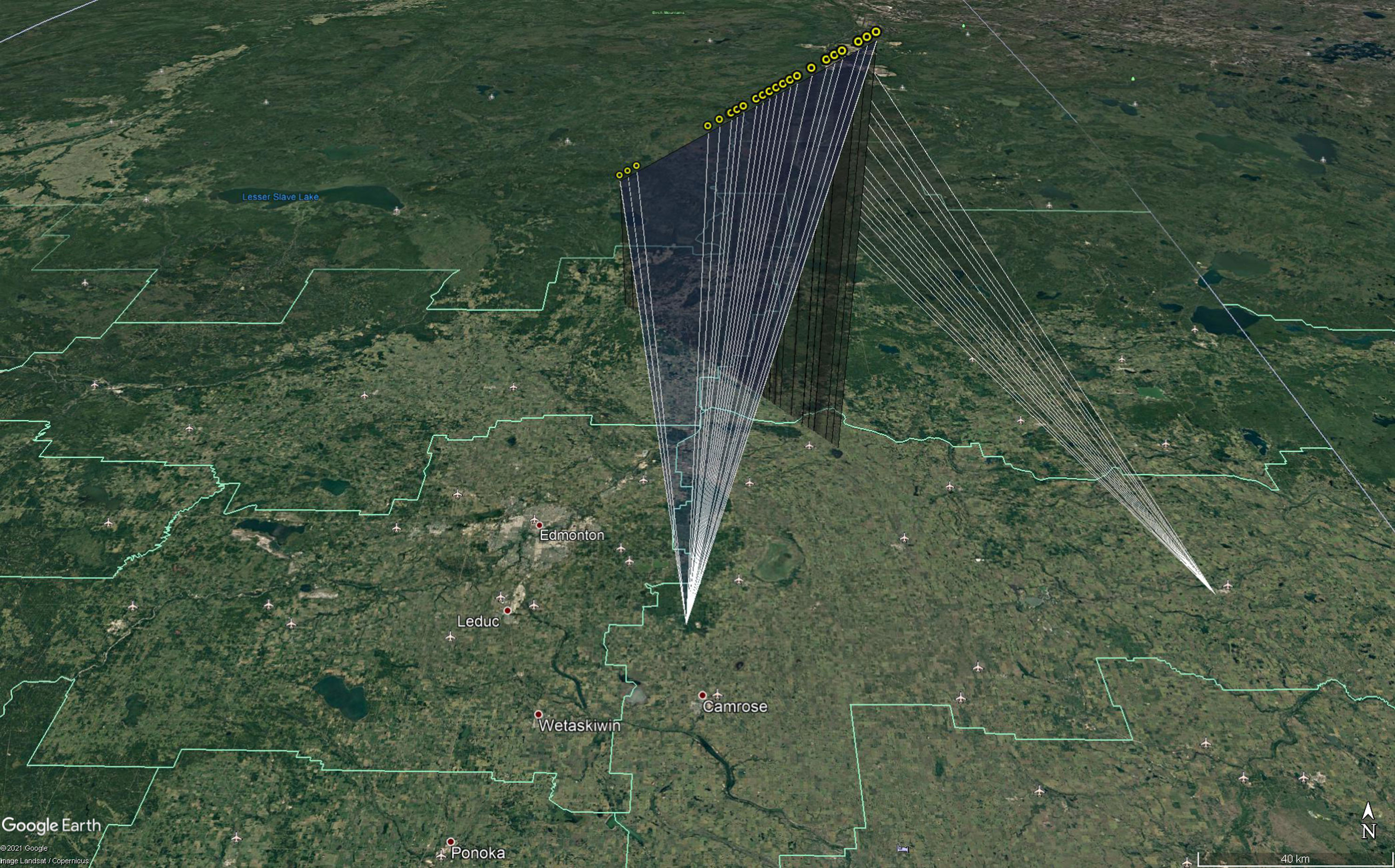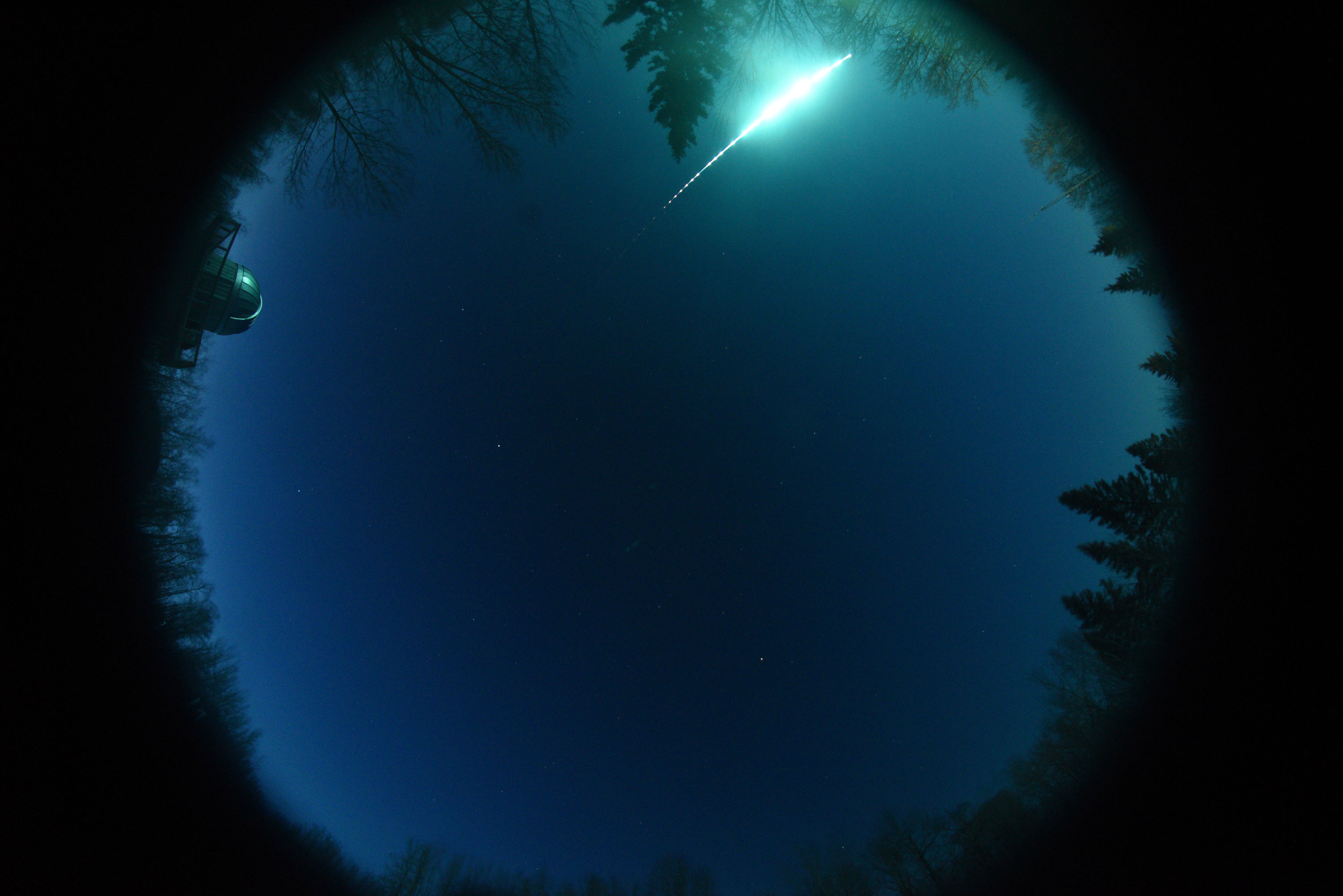Western Canadians caught a glimpse of a bright flash overhead this week as a fireball lit up the sky on Monday morning. Now, University of Alberta researchers have used Western Canada’s most advanced fireball network to capture images and trajectory of the fireball—revealing it to be a small piece of a comet that burned up in the atmosphere.
“Using two observation sites, we were able to calculate both its trajectory and velocity, which tell us about the origin of the meteor and reveal that it was a piece of a comet,” said Patrick Hill, post-doctoral fellow in the Department of Earth and Atmospheric Sciences. “This chunk was largely made of dust and ice, burning up immediately without leaving anything to find on the ground—but instead giving us a spectacular flash.”
The flash occurred at 6:23 a.m., streaking through the sky to a final point on its trajectory 120 kilometres north of Edmonton, and was visible throughout Alberta and parts of Saskatchewan due to the unusually high altitude of the fireball. The small piece of debris, likely only tens of centimetres across in size, was travelling at more than 220,000 kilometres per hour when it entered the atmosphere.
“This incredible speed and the orbit of the fireball tell us that the object came at us from way out at the edge of the solar system—telling us it was a comet, rather than a relatively slower rock coming from the asteroid belt,” said Chris Herd, curator of the UAlberta Meteorite Collection and professor in the Faculty of Science.
“Comets are made up of dust and ice and are weaker than rocky objects, and hitting our atmosphere would have been like hitting a brick wall for something travelling at this speed,” Herd said.

Rocky objects usually burn up between 15 to 20 kilometres above the ground, but scientists determined that the Monday fireball occurred at an altitude of 46 kilometres. This allowed the flash to be spotted by people and picked up on cameras across a wide area.
“All meteoroids—objects that become meteors once they enter Earth’s atmosphere—enter at the same altitude and then start to burn up with friction,” explained Hill. “Sturdier, rocky meteoroids can sometimes survive to make it to the ground, but because this was going so fast and was made of weaker material, it flashed out much higher in the atmosphere and was visible from much farther away.”
The team used Western Canada’s most advanced fireball network to calculate the trajectory of the fireball, using dark-sky images captured at the Hesje Observatory at the Augustana Miquelon Lake Research Station and at Lakeland College’s observation station in Vermilion.
Western Canadians may remember the Buzzard Coulee meteorite from November 2008, which produced a similar fireball effect. Herd explained that Monday’s fireball was travelling almost three times faster, burning it up whereas the Buzzard Coulee meteorite’s sturdier rocky material survived to reach the ground after breaking up in the atmosphere.
While the news that there isn’t anything to find on the ground this week might be disappointing to meteorite-hunters, the team is glad to be able to solve the mystery of Monday’s fireball for the community.
“This is an incredible mystery to have solved,” said Herd. “We’re thrilled that we caught it on two of our cameras, which could give everyone who saw this amazing fireball a solution.”
